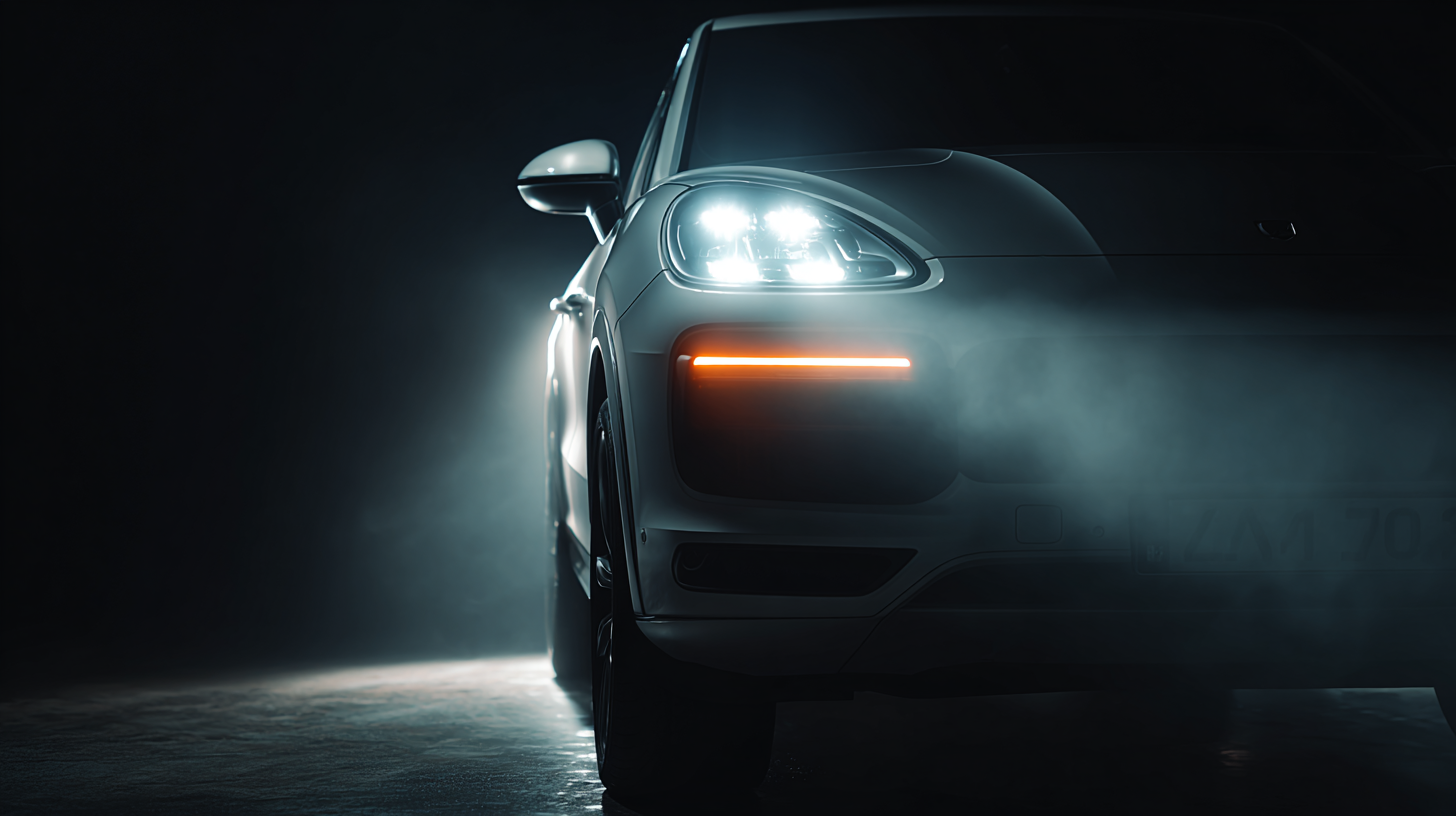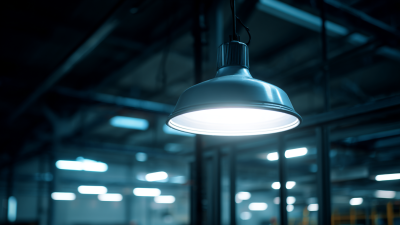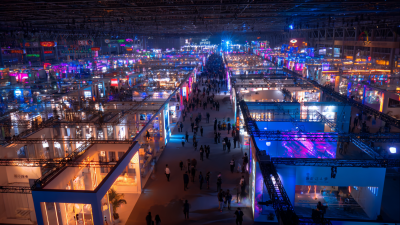 The automotive lighting industry has undergone significant transformation over the last few decades, evolving from traditional halogen systems to the cutting-edge LED technology that dominates today's vehicles. According to a recent report by MarketsandMarkets, the global automotive lighting market is projected to reach USD 34.34 billion by 2025, growing at a CAGR of 6.3% from 2019. This remarkable evolution in automotive lighting is driven by advancements in efficiency, performance, and design flexibility. The shift towards LED lighting systems not only enhances visibility and safety for drivers and pedestrians but also contributes to greater energy efficiency, an essential factor in the increasingly stringent regulations surrounding automotive emissions. As automakers seek to innovate and differentiate their products, the exploration of emerging technologies, such as adaptive and smart lighting, promises to shape the future landscape of automotive lighting, ultimately redefining how we experience driving at night and in adverse weather conditions.
The automotive lighting industry has undergone significant transformation over the last few decades, evolving from traditional halogen systems to the cutting-edge LED technology that dominates today's vehicles. According to a recent report by MarketsandMarkets, the global automotive lighting market is projected to reach USD 34.34 billion by 2025, growing at a CAGR of 6.3% from 2019. This remarkable evolution in automotive lighting is driven by advancements in efficiency, performance, and design flexibility. The shift towards LED lighting systems not only enhances visibility and safety for drivers and pedestrians but also contributes to greater energy efficiency, an essential factor in the increasingly stringent regulations surrounding automotive emissions. As automakers seek to innovate and differentiate their products, the exploration of emerging technologies, such as adaptive and smart lighting, promises to shape the future landscape of automotive lighting, ultimately redefining how we experience driving at night and in adverse weather conditions.
The automotive lighting industry has witnessed a significant transformation with the shift from traditional halogen lighting to modern LED technology. Halogen bulbs have long been the standard due to their affordability and ease of manufacturing; however, they typically generate excessive heat and consume more energy. According to the latest data from the Automotive Lighting Market report by Stratview Research, the LED lighting segment is projected to grow at a compound annual growth rate (CAGR) of over 13% from 2021 to 2026. This surge is attributed to the growing demand for energy-efficient and low-maintenance lighting solutions.
LED technology not only offers superior brightness and clarity but also lasts up to 25 times longer than halogen bulbs. This longevity significantly reduces the frequency of replacements, contributing to lower overall ownership costs. Moreover, LEDs emit less heat, improving safety and efficiency on the road. According to a report by Research and Markets, by 2025, the global market for automotive LED lighting is expected to reach approximately $7 billion, reflecting the rapid adoption of this technology among consumers and manufacturers alike.
Tips: When upgrading to LED lighting, ensure compatibility with your vehicle's electrical system to avoid any issues. Additionally, consider tinted options that provide style while maintaining optimal visibility. Always invest in high-quality LED products from reputable brands to ensure longevity and performance.
The 30th Guangzhou International Lighting Exhibition (GILE 2025), which commenced on June 9, showcased a range of innovations in automotive LED lighting. As manufacturers unveil their latest advancements, the shift from traditional halogen lighting to modern LED solutions stands out as a key trend. This transition not only enhances vehicle aesthetics but also significantly improves energy efficiency, leading to reduced power consumption and longer lifespan of lighting systems. The focus on LED technology reflects a broader industry commitment to sustainability and innovation.
In light of the burgeoning automotive LED market, expected to reach a value of USD 35.729 billion by 2025, industry leaders are leveraging advancements in solid-state lighting. These innovations promise to enhance both safety and visibility on the road, demonstrating the multifaceted benefits of LED lighting in automotive applications. The spotlight is now on ongoing research and development efforts to further improve lighting performance, durability, and environmental impact, ushering in a new era of vehicle illumination that prioritizes both functionality and eco-friendliness.

The automotive lighting landscape is undergoing a remarkable transformation as we advance beyond traditional LED technology. Projections indicate that the global automotive LED market will soar to approximately USD 3.451 billion by 2025, with the overall automotive lighting sector expected to reach around USD 35.729 billion. This growth is fueled by the continuous innovations in lighting technology that aim to enhance not only aesthetic appeal but also safety and energy efficiency.

Upcoming showcase events, such as SID 2025, highlight diverse applications of micro LED technology that promise to illuminate the future of automotive design. Micro LEDs offer advantages in brightness and efficiency, suggesting a shift towards more compact and versatile lighting solutions in vehicles. Companies are setting new benchmarks through cutting-edge innovations that will redefine how lighting integrates with vehicle systems, paving the way for smart and adaptive lighting that responds to real-time driving conditions.
Tip: As automotive manufacturers explore innovative lighting technologies, consider the benefits of adaptive lighting systems that can enhance visibility and safety on the road. Staying updated on industry developments can also inform better purchasing decisions for those in the automotive sector.
Tip: When evaluating new lighting options, focus on energy efficiency and longevity to ensure maximum value and reduced maintenance costs for your vehicles. A strategic approach to upgrading lighting technology can significantly improve both functionality and user experience.
The evolution of automotive lighting has seen significant shifts from traditional halogen bulbs to more advanced LED technology. A comparative analysis reveals that halogen lights, while once the standard, are now being overshadowed by LEDs due to their higher efficiency and longer lifespan. Halogens typically consume more energy and have a shorter operational life, averaging around 1,000 hours, compared to the impressive 25,000 hours or more for LEDs. As a result, the automotive industry is increasingly favoring LEDs, which not only enhance visibility but also improve fuel efficiency by reducing the load on vehicle electrical systems.
Furthermore, the performance metrics of these lighting technologies highlight LED's superior capabilities. LEDs emit brighter, more focused light, which can improve night-time driving safety. Additionally, their compact size allows for innovative design possibilities in vehicle aesthetics and functionality. The financial aspect is also noteworthy; despite higher initial costs for LED systems, the long-term savings on energy consumption and maintenance make them a more economical choice. As regulations around vehicle safety and energy efficiency continue to tighten, the automotive lighting market is poised for further growth fueled by the adoption of LED technology.
The evolution of automotive lighting has witnessed a significant shift from traditional halogen bulbs to more advanced technologies like LEDs and beyond. This transition is not merely a technological advancement; it also reflects growing environmental concerns and sustainability considerations within the automotive industry. Halogen lights, while effective, consume more energy and have a shorter lifespan, leading to increased waste and higher carbon emissions throughout their lifecycle.
In contrast, LED lights represent a more sustainable choice due to their energy efficiency, durability, and longer operational life. They consume less power, resulting in reduced greenhouse gas emissions and a lower carbon footprint. Furthermore, advancements in lighting technology, such as adaptive headlights and smart lighting systems, further enhance vehicle efficiency and road safety. As manufacturers adopt these eco-friendly solutions, they contribute to the broader goal of reducing the environmental impact of vehicles and promoting sustainability in automotive design. The future of automotive lighting is poised to embrace even more innovative technologies, such as organic LEDs and laser lights, all while keeping sustainability at the forefront of their development.
| Lighting Type | Energy Efficiency (%) | Average Lifespan (hours) | Environmental Impact | Sustainability Rating |
|---|---|---|---|---|
| Halogen | 20-30% | 500-1,000 | Moderate | 2/5 |
| Xenon | 30-50% | 2,000-3,000 | Moderate | 3/5 |
| LED | 80-90% | 15,000-30,000 | Low | 5/5 |
| Laser | 90-95% | 20,000-30,000 | Very Low | 5/5 |





